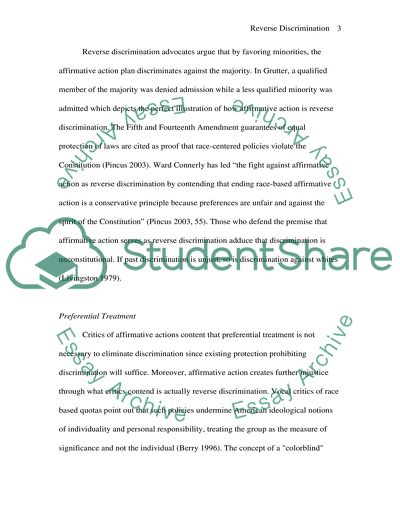Cite this document
(“Reverse Discrimination Term Paper Example | Topics and Well Written Essays - 2000 words”, n.d.)
Retrieved from https://studentshare.org/law/1431154-reverse-discrimination
Retrieved from https://studentshare.org/law/1431154-reverse-discrimination
(Reverse Discrimination Term Paper Example | Topics and Well Written Essays - 2000 Words)
https://studentshare.org/law/1431154-reverse-discrimination.
https://studentshare.org/law/1431154-reverse-discrimination.
“Reverse Discrimination Term Paper Example | Topics and Well Written Essays - 2000 Words”, n.d. https://studentshare.org/law/1431154-reverse-discrimination.


